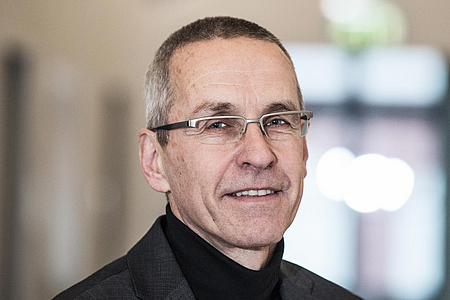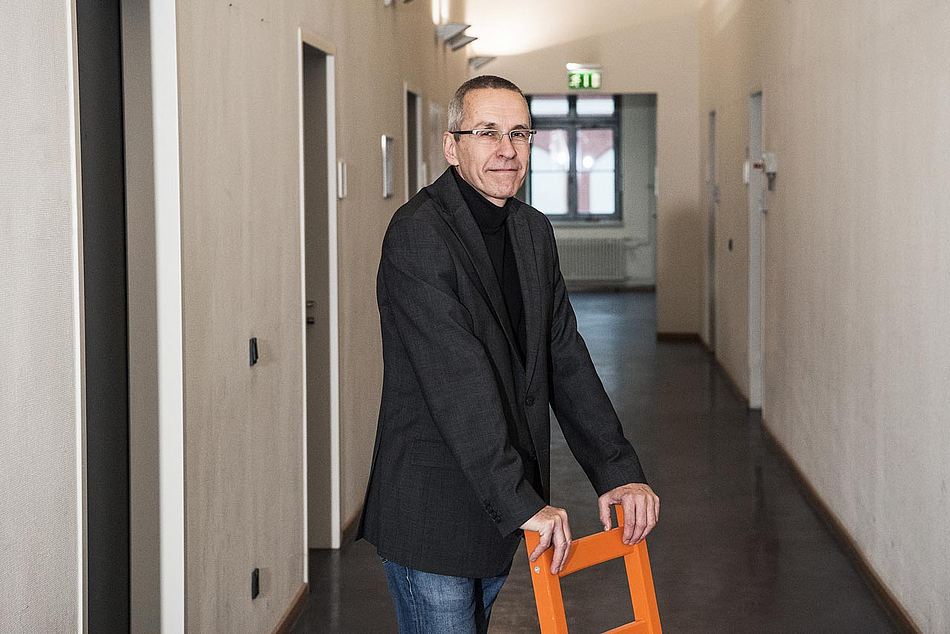Big thinkers and small coincidences
Ulrich Dirnagl is researching the damage mechanisms of strokes with his research team. Within the framework of the BIH Investment Fund, his research team received radiofrequency coils for magnetic resonance imaging (MRI), which enable you to look into the brains of small animals. The scientist and his staff member Philipp Böhm-Sturm spoke to us about the special feature of the new coils, about ethical questions in science and about coincidence:
Professor Dirnagl, you work in the field of stroke research. What specifically is your research team studying?
Dirnagl: We study the interplay between the brain and other organs. When a stroke occurs, it affects not only the brain but also the immune system and the heart. Neurology long ignored that fact – as a neurologist, you are by definition specifically interested in the brain. However, the other systems are highly relevant for the survival and life quality of the patients. For example, patients often develop a disorder of the immune system, due to which lung inflammations can arise. Although we do work with animal subjects, our most important remit is to bring the research results to the patients.
Through the BIH Investment Fund, you received radiofrequency coils for your laboratory and you, Dr. Böhm-Sturm, are one of their primary users. What are these coils used for?
Böhm-Sturm: Thanks to the new coils, we’re the world’s best-equipped laboratory for fluorine MRI. This means that we’re able to image the chemical element fluorine in the MRI. As it’s hardly present in the body, it’s possible to verify a fluorinated contrast medium really well. This enables us to measure oxygen saturation in the tissue deep in the brains of small animals for the first time and thus gain new non-invasive insights into the brain. Also, standard MRIs at the clinic are currently unable to image inflammatory processes, even though these play a major role in strokes. The coils can also be used for that purpose. We are therefore investigating for which applications it would be useful to accordingly convert MRIs in hospitals. Two months ago, we organized a workshop with almost 100 scientists from all over the world. That was a big step forward for the field of fluorine MRI. The next step is to try to further develop the fluorinated contrast media together with chemists from the University of Düsseldorf, so that they bind more specifically to biological processes such as plaques, clots or inflammatory processes in the blood.
You are testing the fluorine MRI on animals. Research on animals is generally known to be a sensitive issue. How do you deal with that?
Böhm-Sturm: That is of course a sensitive issue and animal welfare should be taken very seriously. There is definitely always a need for improvement and it’s important to include social stakeholders. Our animals survive the procedure in the MRT, and we try to replace invasive animal experiments in which, for example, sections would have to be made of the brain. Whereas X-rays or a computer tomography scan involve high radiation exposure, the MRI works using radio frequencies. These involve such low energetic levels that they are regarded as completely harmless – for animals too.

Funding program
BIH Investment Fund
Funding period
2015
Project title
Radiofrequency coils for fluorine magnetic resonance imaging (MRI) in basic biomedical research
Research areas
Neuroscience, imaging technology
Institution
Charité – Universitätsmedizin Berlin
Since 2017
BIH Chair, Transforming Biomedical Research, Berlin Institute of Health (BIH)
Since 1999
Director of the Division of Experimental Neurology, Charité – Universitätsmedizin Berlin
2008 – 2017
Director of the Center for Stroke Research Berlin, Charité – Universitätsmedizin Berlin
What would it mean for research if one suddenly stopped using animals?
Böhm-Sturm: That would remove a cornerstone from the bridge between basic research and the clinic for which there is currently no substitute. An animal or a human being is a much more complex organism than the in-vitro model. Substances that have a certain effect in cell culture do not necessarily have that effect in other organisms. Consequently, a medication that hasn’t yet been tested on an animal could be dangerous. It’s therefore unlikely that one would directly test it on human beings. And incidentally, most animal experiments are carried out for the purpose of getting chemicals approved.
It’s a big step from cell culture to the human organism. How much of the whole picture is it possible to see, as one individual?
Dirnagl: I read a lot about how people hit upon new ideas hundreds of thousands of years ago: for example, Eratosthenes – who, in the third century BC, determined the circumference of the earth with a precision that was only out by a couple of kilometers. Today, we work very incrementally, adding our part to an incredible amount of knowledge. Everyone’s puzzling things out in their own corner – which is important. Nowadays, we no longer see those kinds of great, new discoveries. When I think of Newton, Galileo or Eratosthenes, I feel very small by comparison. Newton famously explained that he had only been able to make new discoveries because he had been standing “on the shoulders of giants”. I think that we’re all standing on the shoulders of giants, but those giants are already hundreds of years old.
But stroke research certainly didn’t yet exist hundreds of years ago, did it? Did you want to explore unknown territory?
Dirnagl: I ended up in stroke research mainly by chance. I happened to write my doctoral thesis with Professor Einhäupl, who was one of the first, back then, to use computers in his research. I didn’t know much about computers and wanted to change that. Later on, I worked on a neurological project with intensive care patients. From there, I gradually moved into the field of strokes. The seal was set on it when I went to the USA on a scholarship grant and did two years’ research on strokes. I chose that laboratory mainly because the father of my then girlfriend, now my wife, was a Professor in New York. We often mistakenly imagine that we’re controlling or steering things. But in science, the nicest things happen by chance – you just have to make sure that you notice them.
December 2017 / MM
